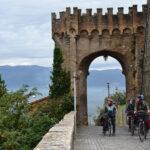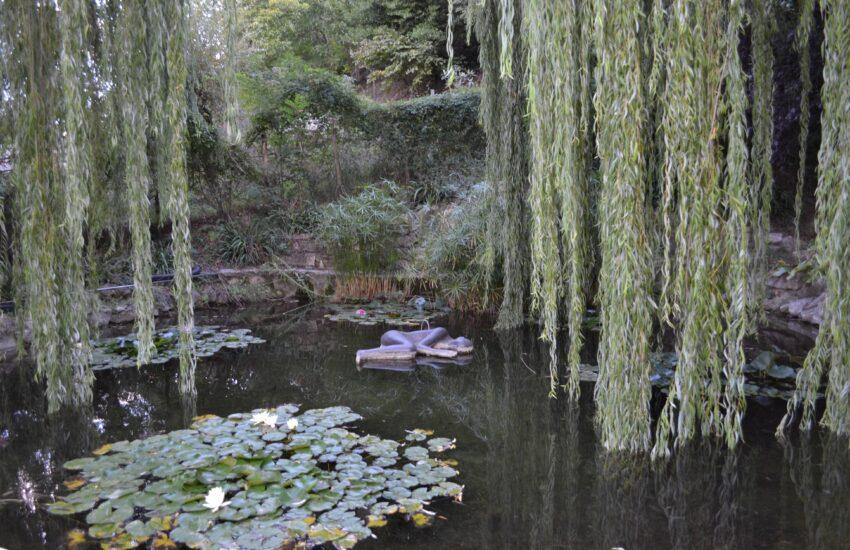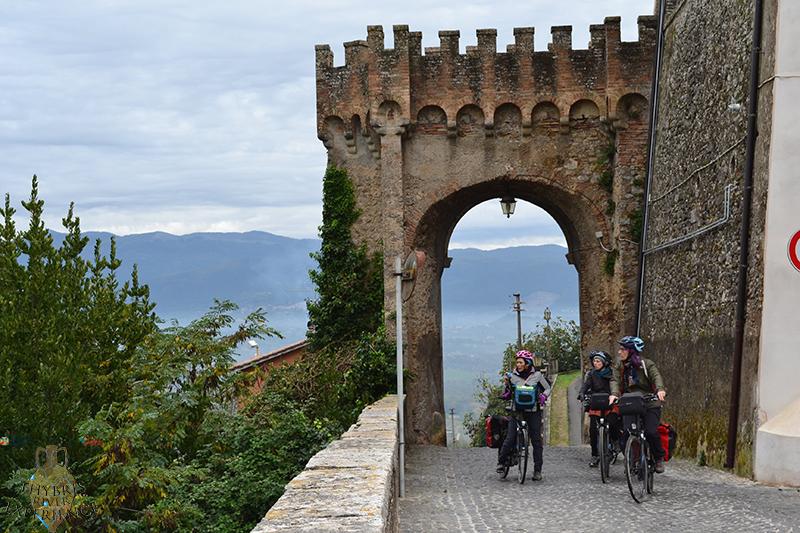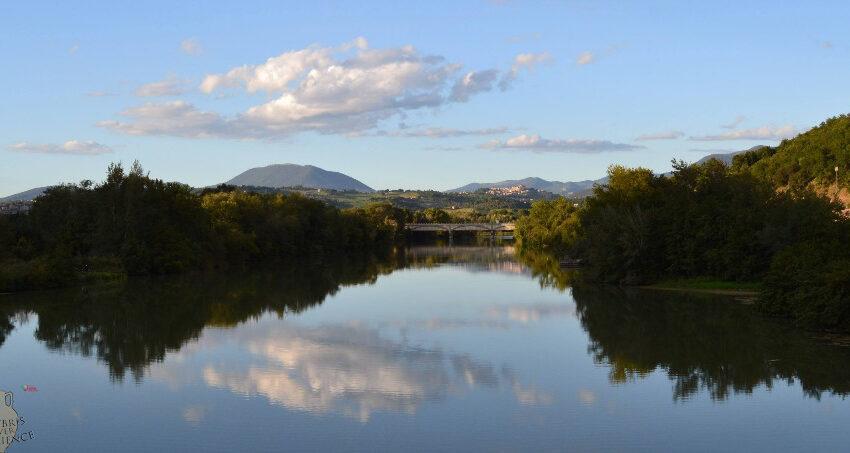Ponzano Romano – the city with Harry Potter windows and doors
Why visit the village of Ponzano Romano on the Tiber River?

Primarily because it can happen that while visiting the historic center you could by chance meet a man who invites you to have a coffee at his house and then discovers that it is none other than the Neapolitan artist Michele Longhi, painter, movie maker and set designer of important works, theatrical and cinematographic ones including Una disperata vitalità, a documentary film by Mario Martone on the lyrics of the intellectual, writer, movie-maker, Pier Paolo Pasolini that mysteriously died in 1975. In the town, a few things immediately strike you: the important presence of contemporary works of art, walled doors and windows that give a magical touch to the town a little like Harry Potter, the beautiful view of the Fiasco (i.e. the Tiber River bows with a wine-flask-like shape), the enduring Christmas atmosphere thanks to the presence of shop windows decorated all year round … it seems that Santa Claus has moved right here in Ponzano Romano.

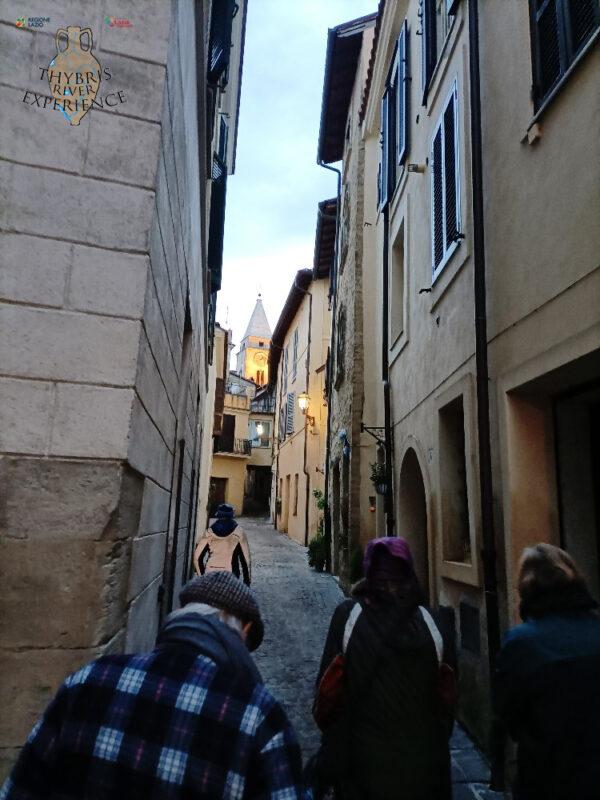
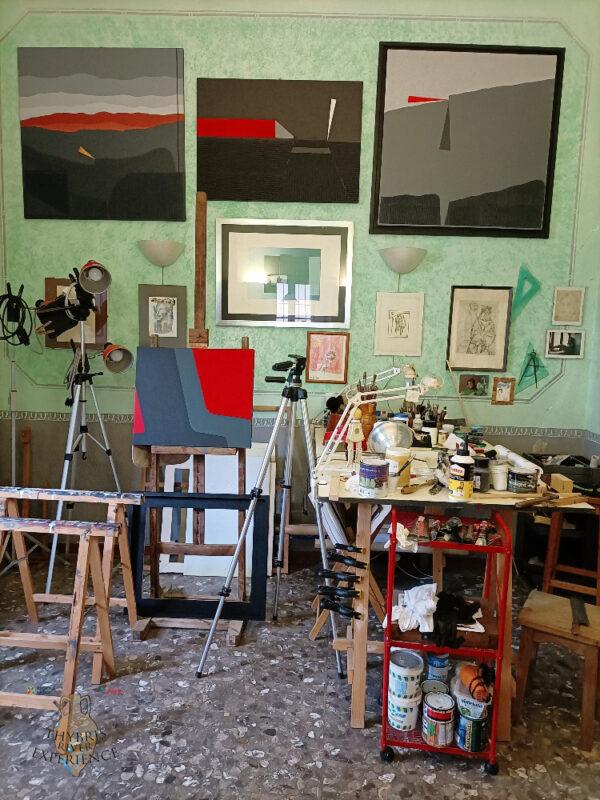
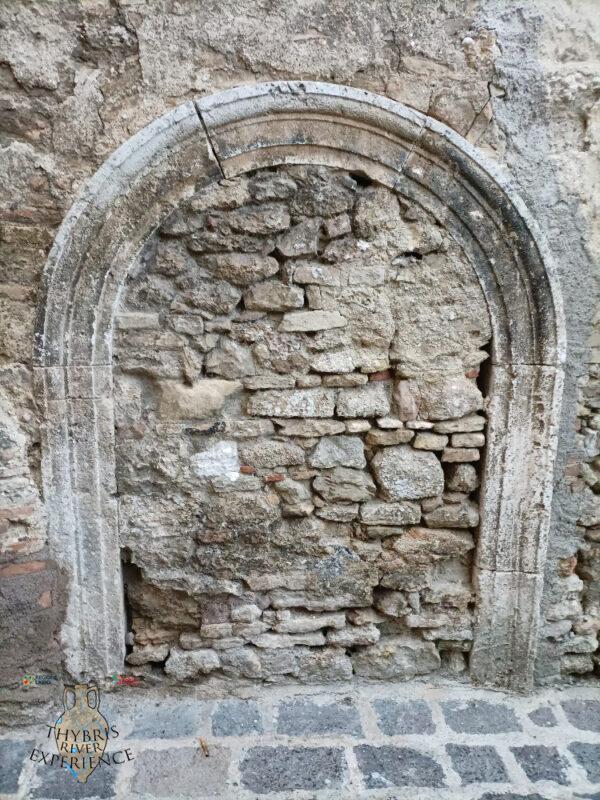
Brief history of the village of Ponzano Romano
Ponzano Romano is located about 50 km north of Rome, on one of the last offshoots of the hilly system that slopes down from Soratte Mountain and extends into the plain on the right bank of the Tiber River. The village stands on a tuffaceous rock, which dominates the Tiber Valley. The name of the town perhaps derives from pons Jani (i.e. Janus bridge) or perhaps from the gens Pontia, a Roman family that owned a villa and land in the area. In the 8th century, the city belonged to the Farfa Abbey and in the same period, the Benedictines settled in the Abbey of S. Andrea in Flumine, who took possession of the territory around the mid-11th century. The primitive settlement nucleus was built towards the end of the 13th century. From 1816 to 1870 it was part of the Comarca of Rome, an administrative subdivision of the Papal States. In 1872, Ponzano changed its name to Ponzano Romano.

Ponzano Romano and the Soratte olive oil
The municipality is the production area of the Soratte extra virgin olive oil, one of the excellence of the whole region of Rome and famous from antiquity. It’s a so-called DOP i.e. of controlled origin which guarantees its quality and the place of production.
Ponzano Romano’s secret places to visit with your guided tour
The PRAC (Centre for Contemporary Art of the Municipality of Ponzano Romano
The PRAC is a multifunctional location, located in the medieval village of Ponzano Romano, which aims to promote art through the production of exhibition projects involving nationally and internationally renowned artists. Until 15/01/2023 there is an interesting exhibition curated by Graziano Menolascina, which is inspired by the famous classical Roman expression memento mori, a concept that became important in the Christian painting of the Counter-Reformation, symbolized by a skull. The exhibition develops in various places such as the halls of Palazzo Liberati, the church of Santa Maria ad Nives and Piazza Salvo d’Acquisto.
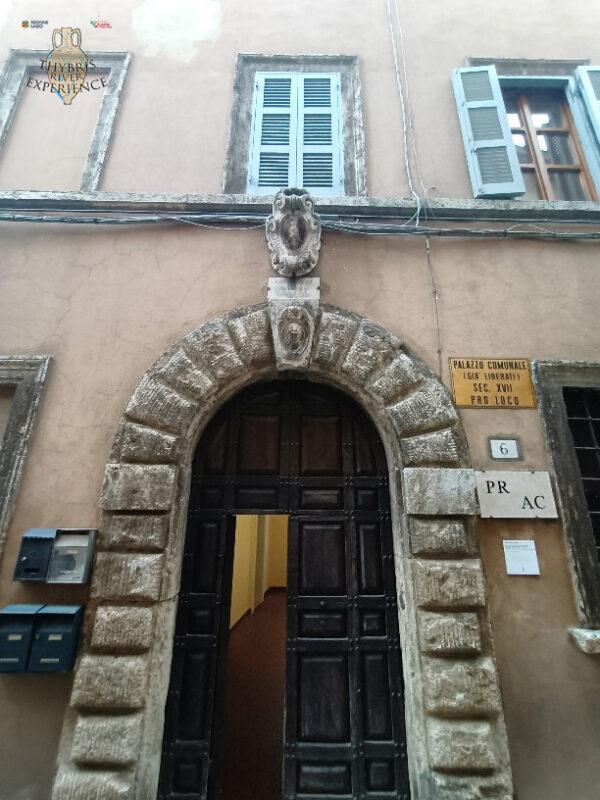
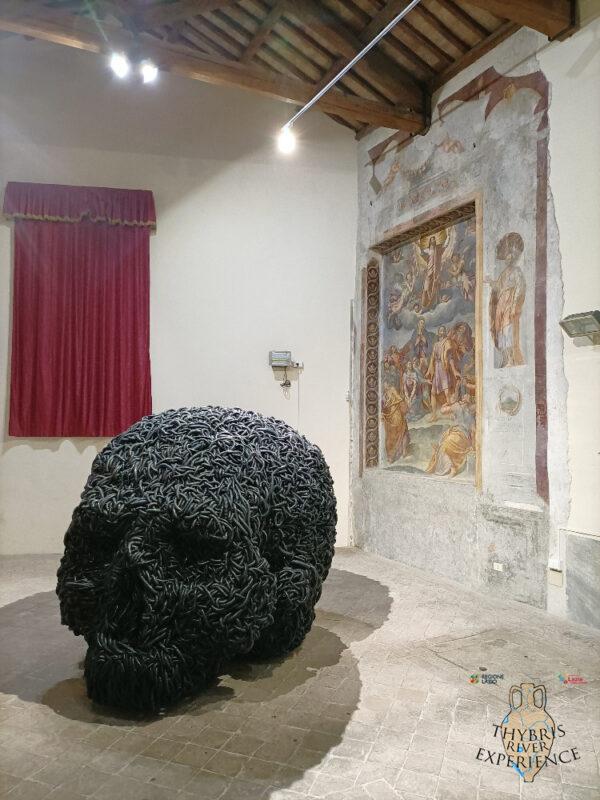
The Fiasco of the Tiber River i.e. the Tiber River bow that looks like a wine-flask
From the panoramic terrace on the Fiasco, we can admire the characteristic stretch of the Tiber river with a rare conformation, a shape of a wine-flask bottle. The lively waters of the river create bends which, at the height of Ponzano Romano, two of these bends approach considerably forming the famous shape. Embankment work was carried out to prevent the two loops from coming into contact.
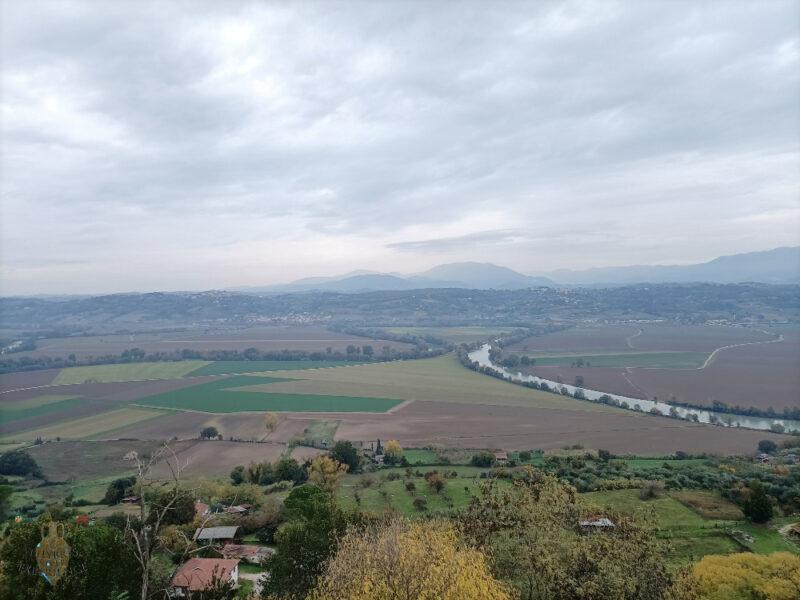
The art installation by the Chinese artist Wang Yuxiang
The installation is located on the panoramic terrace of the Fiasco. The installation consists of an old door, recovered in a warehouse in Ponzano Romano. The door, which is slightly ajar, directs the observer’s gaze towards the countryside of the lower Sabina Hills. From the upper part of the door, on the other hand, there is a continuous downpour of water, in imitation of rain, which in the artist’s intentions symbolizes energy and creative drive.
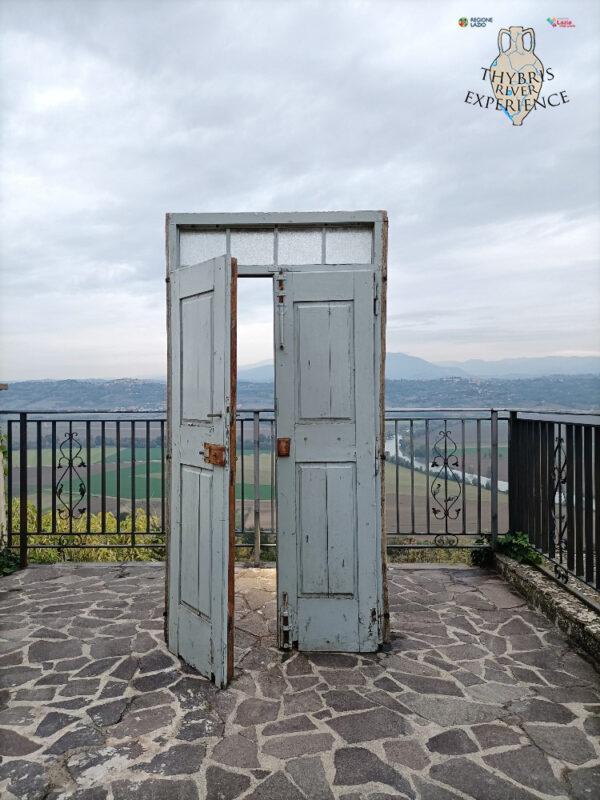
AmenCutti Museum
A museum that is the only one in Italy entirely dedicated to Christmas festivity.
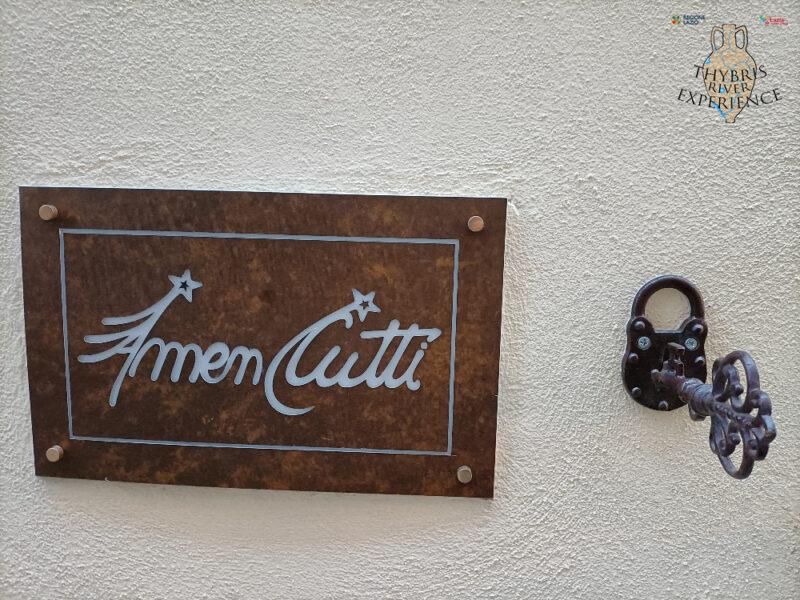
The old story of the witch doctor of Bona Dea lands
Bellezza Orsini was born in Collevecchio, on the left bank of the Tiber River, between 1475/78, probably the natural daughter of Pietro Angelo Orsini (exponent of one of the oldest and most noble families in Italy). She worked for the Orsini’s in Monterotondo, where she met a witch doctor (in Italian a fattucchiera) from Ponzano, called Lucia, who taught her the secrets of herbs and various magic formulas. Bellezza Orsini lived between the villages of Ponzano and Filacciano, where she took care of sick people. However, there were accusations against her, in fact, she, together with other women, was driven out of Filacciano, where, however, she was able to return to help some in need of care. One day she decided to participate in an Easter procession from the town headed to Rome; during the procession, a child fell ill and Bellezza’s care could not prevent her death. The child’s parents accused her of murder and witchcraft and she was therefore arrested and taken to the secret cell in Fiano Romano, the seat of the Court, where she was tortured and sentenced. To avoid the painful death of the stake, she took her own life by striking herself with a nail in the throat.
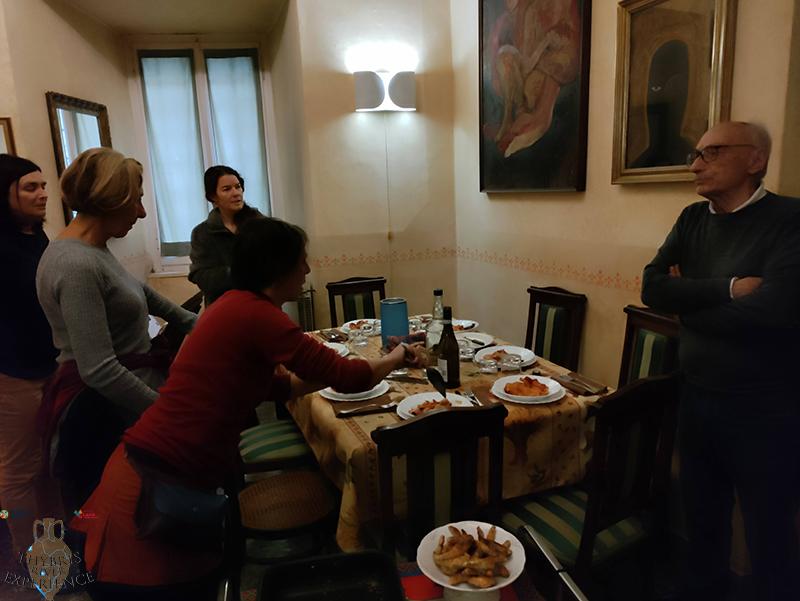
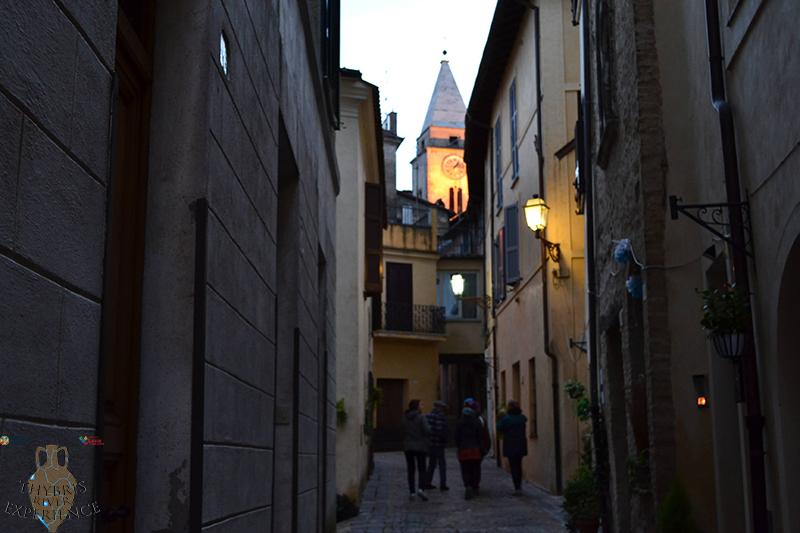
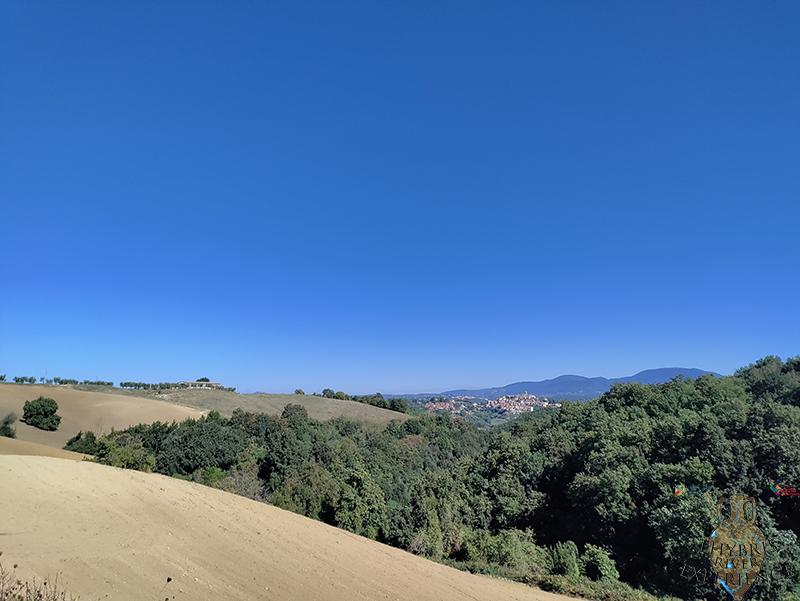
The spinster feast (in Italian: la festa delle zitelle)
This feast is counted among the recurrences of a religious nature in the Statute of 1627, where the patronal feast of S.Nicola foresees the procession and two events, namely the bruschetta festival and the dowry spinster feast. It takes place over two days, on Saturday the Zitella is drawn by lot, a young unmarried girl between 18 and 30 who is assigned a symbolic dowry by the municipal administration. The value of the party today consists in promoting the beauty of young single women. The following day, the Zitella is then granted an important place in the religious procession and the bruschetta festival.
Two illustrious artists born in Ponzano Romano
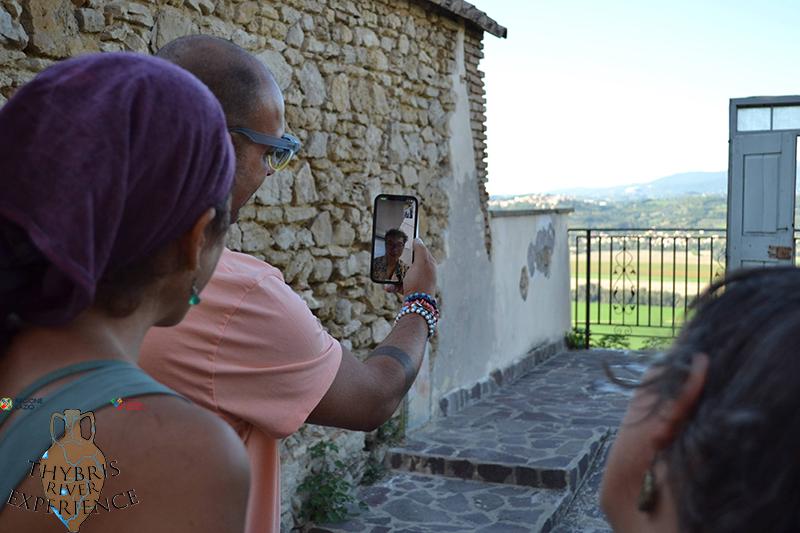
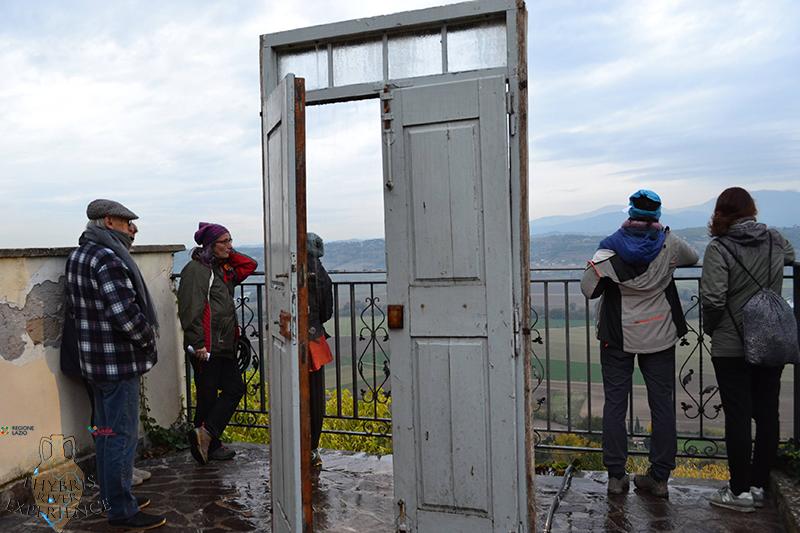
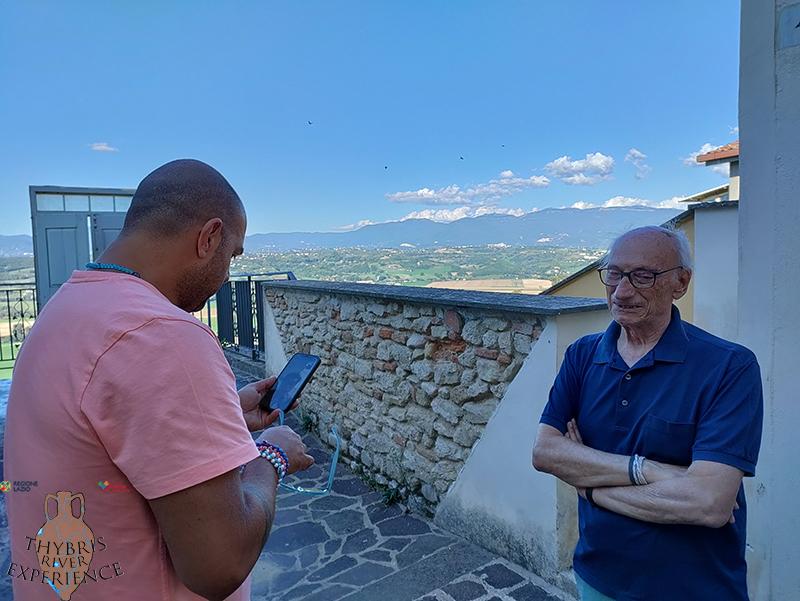
–Agostino Tassi: landscape painter born in 1580. He was a collaborator of Orazio Gentileschi and sadly known for having raped the painter Artemisia Gentileschi, daughter of the aforementioned Orazio.
-Domenico De Angelis, president of the Naked Academy and resident in Villa Medici, painted 1779 The Judgment of Paris for Prince Marcantonio Borghese on the ceiling of the Borghese gallery, where the famous statue of Paolina Borghese created by Antonio Canova is located.


